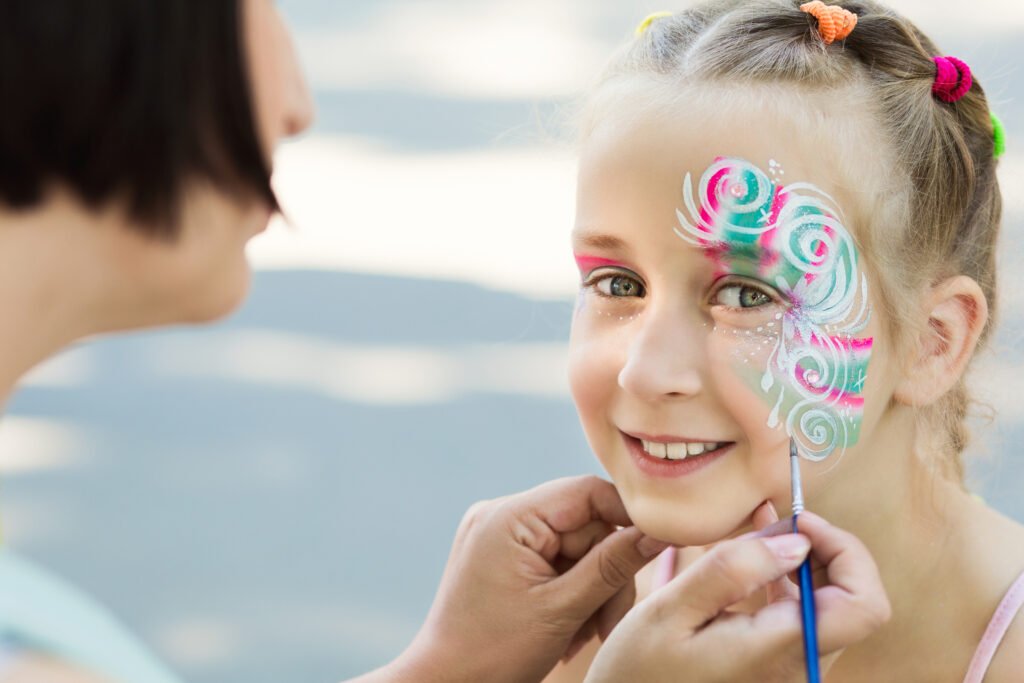1. Can the efficacy claims under the application form for the record of imported children’s cosmetics be inconsistent with the efficacy claims in the original sales package label?
According to the requirements of Article 2.1 of the Technical Guidelines for Children’s Cosmetics, imported children’s cosmetics must strictly follow the information on the sales package label (including instructions) of the cosmetic registrant, the country (region) of the registrant or the country (region) of the producer in the filing process. This means that the import of children’s cosmetics in filling out the classification code and determining the declaration of the category must ensure that the original sales package label with the efficacy of the claim, the role of the part, the use of the crowd, the product dosage form, the method of use and other information is entirely consistent, there shall not be any unauthorized changes or modifications.
This requirement is to ensure the quality and safety of imported children’s cosmetics and protect children’s health rights and interests. In the cosmetics market, differences in regulations, standards, consumption habits, and other factors in different countries and regions may lead to various labels and promotional information for the same product in different markets. However, for children’s cosmetics imported into China, it is necessary to strictly comply with China’s regulatory requirements to ensure that the labeling and promotional information of the product is true, accurate, and legal.
At the same time, this also reflects our strict supervision and highly responsible attitude towards imported cosmetics. By requiring imported children’s cosmetics to fill in the classification code and declaration category according to the information on the original sales package label, it can effectively prevent the occurrence of false propaganda, misleading consumers, and other malpractices, and safeguard the consumers’ right to know and correct to choose.

2. Children’s cosmetics should be careful when filling in the product name naming basis.
Following the guidelines of 2.2 of the Technical Guidelines for Children’s Cosmetics, imported children’s cosmetics need to declare both the foreign language and Chinese name of the product, and clearly state the correspondence between the two. Naturally, products specifically designed for the Chinese market without a foreign name are excluded. A scientific and reasonable explanation is also required when there is a lack of direct correspondence between the two. In addition, 2.2.3 of the Technical Guidelines for Children’s Cosmetics emphasizes that the attribute name must genuinely reflect the physical properties or form of the product and must be highly consistent with the sensory indexes in the product implementation standards. In this way, the accurate labeling of children’s cosmetics can be ensured, providing consumers with safe and transparent choices.
3. How should children’s cosmetics formulate the purpose of using raw materials?
Following the guidelines in 2.3.1 of the Technical Guidelines for Children’s Cosmetics, the purpose of the ingredient must be clear and in accordance with the specifications. This requires a precise description of the key role of the ingredient in the product, ensuring that this description closely matches the physical and chemical properties of the ingredient, the product characteristics, and the manufacturing process.
4. Do microbiological and physicochemical indicators for children’s cosmetics require a pH value?
Article 2.4.3.1 of the Technical Guidelines for Children’s Cosmetics stipulates that children’s cosmetic products should be clearly labeled with the pH range in general. Still, it does not apply to dosage forms for which the pH value cannot be determined. For resident cosmetics, the pH should be maintained between 4.5 and 7.5, including 4.5 and 7.5, while the pH range for showering cosmetics should be between 4.5 and 8.5, again including 4.5 and 8.5.
However, when considering factors such as the physiological characteristics of specific areas of use, such as the diaper area of infants and young children, or the unique attributes of the product, as well as the stability of the raw materials, if the pH range set falls into any of the following scenarios, a scientific and justifiable explanation must be provided, and a comprehensive safety assessment must be conducted. This requirement ensures that while pursuing efficacy, children’s cosmetics also consider children’s delicate skin and special needs to protect their healthy growth.
(1) Setting the lower limit of pH range ≥3.5 but <4.5;
(2) Setting the upper limit of pH range for resident cosmetics >7.5 but ≤10.5;
(3) The upper limit of the pH range of shower cosmetics is>8.5 but ≤10.5.
5. The function claimed to be makeup removal and cosmetic modification of children’s cosmetics. What are the Chinese labeling requirements for the labeling of safety warnings?
Following the specification of 2.4.5 of the Technical Guidelines for Children’s Cosmetics, for those children’s cosmetics whose efficacy claims to be mainly for makeup removal and cosmetic modification, we should clearly define the usage scenarios and conspicuously label the tips of “Please wash it in time.” At the same time, we should not ignore the warnings, such as “If there is any discomfort, please stop using it immediately.” At the same time, we should not ignore the warning “If you feel unwell, please stop using it immediately.” These warm reminders, like a caring guardian angel, always remind children to remember to wash after using these cosmetics to stop using them immediately and seek help if they feel unwell. Such labeling is not only responsible for children’s safety but also a thoughtful reminder to parents.

6. What are the requirements of Chinese labeling of children’s cosmetics for allergenic fragrance components, efficacy claims for repair, soothing, and specific claims?
According to 2.5.2 of the Technical Guidelines for Children’s Cosmetics, when the flavorings and aromatic plant oils used in children’s cosmetics contain fragrance components listed by domestic and foreign authorities as likely to cause allergic reactions, manufacturers can choose to explicitly label the names of these fragrance components on the entire ingredient label of the product or choose to label them in other conspicuous positions on the label.
According to the guidance in 2.5.3 of the Technical Guidelines for Children’s Cosmetics, for products that claim to have reparative or soothing effects or products that specifically state that they are suitable for sensitive skin, use tear-free formulas, emphasize the efficacy of raw materials, and are gentle and non-irritating, the content on the labels must be strictly consistent with the summary of the basis for the product’s efficacy claims. This means that every word and phrase on the label must not be arbitrary, much less contain false or misleading information to consumers.
7. What are the requirements for toxicology test reports for children’s cosmetics?
In clause 2.6.2 of the Technical Guidelines for Children’s Cosmetics, the safety of children’s cosmetics is strictly regulated. It requires that for acute eye irritation/corrosivity test of children’s cosmetics, the result must be non-irritant or slightly irritant. Only when the test result is entirely non-irritating can we proudly claim that it is a “tear-free formula,” ensuring that children’s eyes will not be harmed in any way when using it.
The skin irritation/corrosion test for children’s cosmetics must also be non-irritating to ensure that children’s skin does not become uncomfortable after contact with the product. The conclusion of the skin allergenicity test must be non-sensitizing, which means that the product will not cause allergic reactions in children. In addition, the conclusion of the skin phototoxicity test should be non-phototoxic, which guarantees that children will not be harmed in any way after using the product, even under the sun.
8. What are the requirements for the safety assessment of colorants, preservatives, surfactants, flavors and fragrances, stickers, and film carriers for children’s cosmetics?

(1) Evaluation of colorants
According to the “Children’s Cosmetics Technical Guidelines” 2.7.2.2.2 requirements, the use of more than four (including four) colorants should explain the types of raw materials used, the amount of science and necessity, to carry out relevant research to ensure that the product is safe to use, and, if necessary, to submit data on human safety tests as evidence to support.
(2) Evaluation of preservatives
According to the “Children’s Cosmetics Technical Guidelines” 2.7.2.2.3 requirements, the amount of preservatives residing in the product is close to the “Cosmetic Safety Technical Specification” of the limit (more than 90%), or the use of more than five (including five) “Cosmetic Safety Technical Specification” preservatives, should provide the relevant scientific evidence to explain the type of raw materials used, the amount of science and the need. If necessary, research data on formulation optimization can be provided as evidence to support it, but the final formulation of human safety test data can also be provided as evidence to support it.
(3) Evaluation of surfactants
According to the requirements of 2.7.2.2.4 of the Technical Guidelines for Children’s Cosmetics, surfactants should be used reasonably under the premise of prioritizing safety and necessity of efficacy, and the use of raw materials such as quaternary ammonium cationic surfactants is not recommended. Quaternary ammonium cationic surfactants should be used to analyze the science and necessity of their use. Human safety test data should be submitted as evidence to support it if necessary.
(4) Evaluation of flavors and fragrances
According to the requirements of the “Children’s Cosmetics Technical Guidelines” 2.7.2.3, children’s cosmetics used in the fragrance as well as aromatic plant oil raw materials if they contain domestic and foreign authoritative bodies issued by the possible allergenic fragrance components (see the “Children’s Cosmetics Technical Guidelines” Schedule), in principle, the product should be calculated on the content of potentially allergenic fragrance components, if it is in the residual type of product > 0.001%, in the shower products > 0.01%, the safety of children should be thoroughly assessed and labeled in the product label.
(5) Evaluation of carrier materials for stickers and films
According to the requirements of 2.7.2.6 of the “Technical Guidelines for Children’s Cosmetics,” the stability of the carrier materials of stickers and movies (whether they are degraded or not, whether they produce risky substances or not, whether the risky substances are migrated to the contents, etc.) should be thoroughly evaluated for safety.
